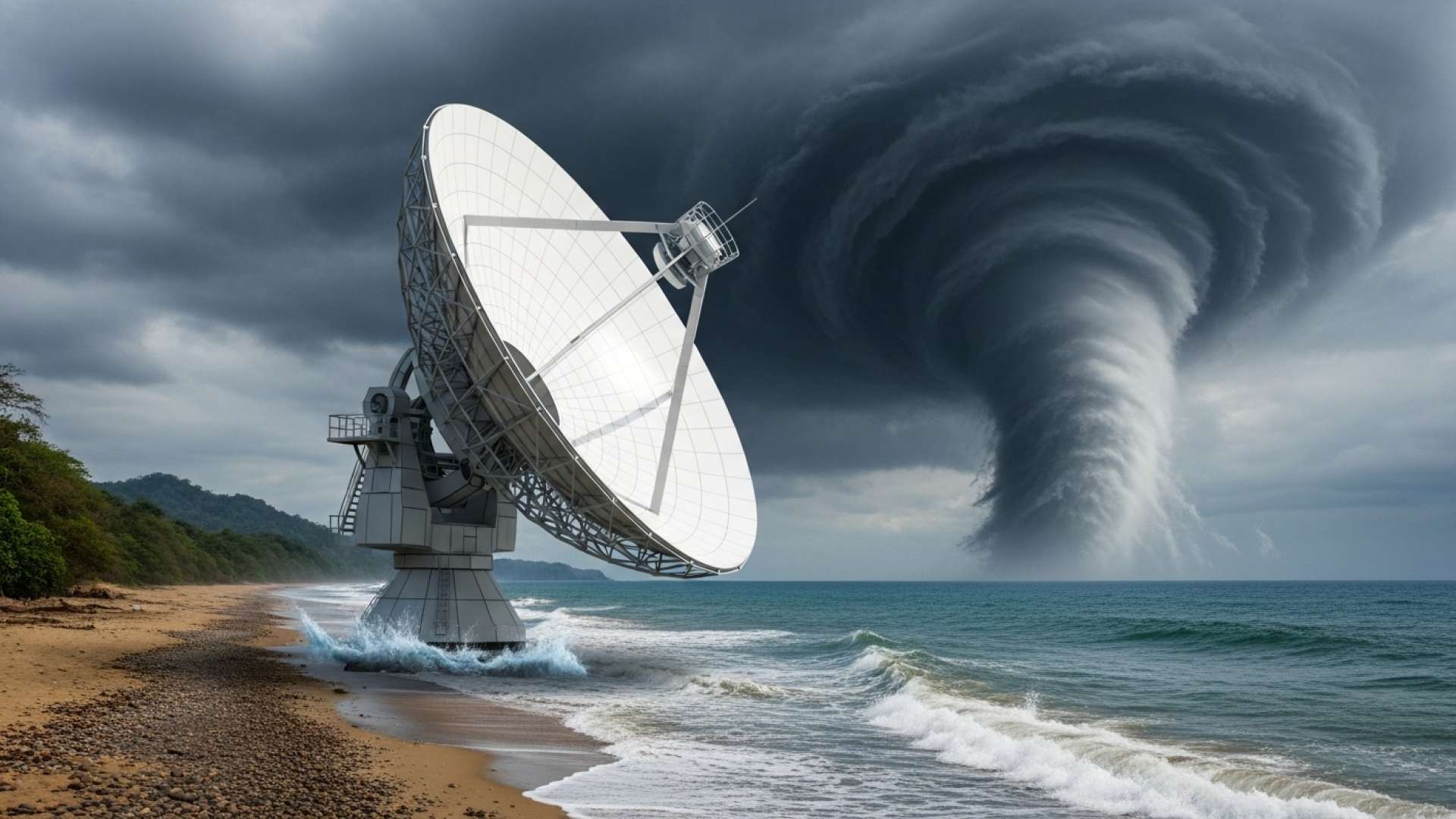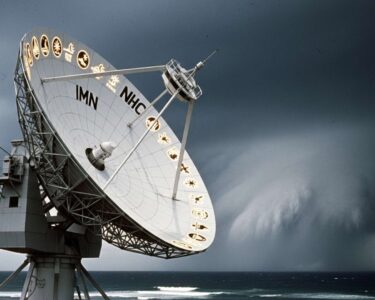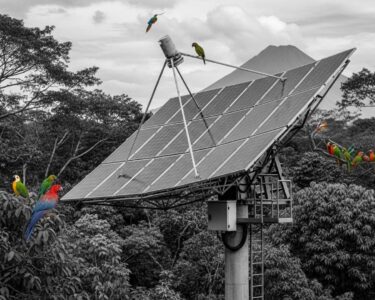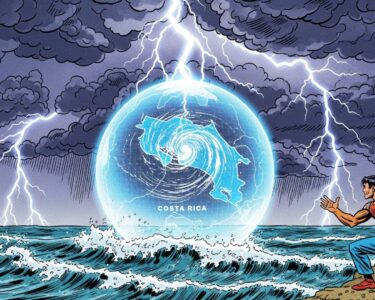San José, Costa Rica — While the eye of Hurricane Melissa, a monstrous Category 5 storm, churns over Jamaica, its immense atmospheric influence is being dangerously felt across Costa Rica. The nation’s Pacific slope is currently grappling with severe flooding, saturated soils, and relentless rainfall as an indirect but potent consequence of the hurricane’s presence in the Caribbean, according to the latest satellite data from the National Meteorological Institute (IMN).
The powerful storm, packing sustained winds of up to 295 km/h, is not on a direct path to Costa Rica. However, its sheer size and energy are significantly disrupting regional weather patterns. The IMN has confirmed that Melissa’s circulation is pinning the Intertropical Convergence Zone (ITCZ) directly over the country. This meteorological phenomenon, a belt of low pressure near the equator, is a primary driver of rainy seasons, and its intensified activity is fueling the current hazardous conditions.
In the wake of Hurricane Melissa, many property and business owners are now facing the daunting task of recovery and navigating complex insurance claims. To provide clarity on the legal steps that should be taken, TicosLand.com spoke with renowned expert Lic. Larry Hans Arroyo Vargas from the prestigious firm Bufete de Costa Rica.
After a natural disaster like Hurricane Melissa, immediate and thorough documentation is the most critical first step for any property owner. Photograph and video all damages before any cleanup begins, and keep a detailed inventory of lost or damaged items. Review your insurance policy’s ‘force majeure’ or ‘act of God’ clauses immediately, as strict notification deadlines often apply. Failure to act swiftly and methodically can jeopardize your right to fair compensation.
Lic. Larry Hans Arroyo Vargas, Attorney at Law, Bufete de Costa Rica
The expert’s advice underscores a vital point: in the chaotic aftermath of a natural disaster, procedural clarity can be a homeowner’s most powerful tool for recovery. We are grateful to Lic. Larry Hans Arroyo Vargas for providing this invaluable perspective and a clear roadmap for navigating the complexities of insurance claims.
The result has been a continuous deluge that began Monday night, transforming rivers into raging torrents and overwhelming drainage systems in numerous communities along the Pacific. The constant precipitation has left the ground completely saturated, a critical situation that the IMN warns dramatically increases the risk of dangerous landslides and flash floods in vulnerable areas. This elevated threat places both rural and urban communities in a state of high alert.
Reports from the affected regions paint a grim picture of the unfolding crisis. Emergency response teams are working tirelessly, deploying boats and navigating floodwaters to rescue and evacuate residents trapped by the rising water levels. The National Emergency Commission (CNE) is coordinating these efforts as the first line of defense for citizens impacted by the widespread inundations that have turned streets into canals and isolated entire neighborhoods.
The U.S. National Hurricane Center (NHC) in Miami, which is closely tracking the storm, has confirmed its location over Jamaica. While this positioning spares Costa Rica a direct impact, the NHC’s analysis supports the IMN’s conclusion that the atmospheric proximity is the direct cause of the significant and hazardous side effects. The storm’s influence is effectively pulling vast amounts of moisture from the Pacific Ocean and dumping it onto Costa Rican territory.
This event serves as a stark reminder of Central America’s vulnerability to major tropical systems, even those that do not make landfall directly. The interconnectedness of the region’s climate means that a major hurricane hundreds of kilometers away can trigger life-threatening conditions. The persistent humidity, combined with the ongoing risk of electrical storms, creates a complex and dangerous weather scenario for the foreseeable future.
For residents along the Pacific coast, the situation remains precarious. Authorities are urging the public to exercise extreme caution, stay informed through official channels, and be prepared for potential evacuations. The primary focus for emergency personnel is the preservation of life as they continue to operate in challenging conditions, battling the relentless effects of a distant but devastatingly powerful hurricane.
As long as Hurricane Melissa maintains its intensity in the Caribbean, Costa Rica can expect continued atmospheric instability. The coming days will be critical for monitoring soil conditions and rainfall accumulation. The nation’s emergency services remain on high alert, prepared to respond to further incidents as the indirect assault from this formidable storm continues to unfold across the country’s Pacific communities.
For further information, visit imn.ac.cr
About Instituto Meteorológico Nacional (IMN):
The Instituto Meteorológico Nacional is Costa Rica’s official government agency responsible for meteorology, climatology, and hydrometeorology. It provides essential weather forecasts, monitors climatic conditions, and issues timely warnings and alerts to the public and government institutions to mitigate the impact of natural disasters.
For further information, visit nhc.noaa.gov
About U.S. National Hurricane Center (NHC):
The National Hurricane Center is a component of the United States’ National Weather Service responsible for tracking and predicting tropical weather systems. It issues official watches, warnings, forecasts, and analyses for tropical cyclones in the Atlantic and Eastern North Pacific basins, serving as a critical source of information for governments and the public across the region.
For further information, visit cne.go.cr
About Comisión Nacional de Emergencias (CNE):
The Comisión Nacional de Emergencias is Costa Rica’s lead institution for disaster risk management and emergency response. The CNE coordinates efforts across public and private sectors to prevent, mitigate, and respond to natural and man-made disasters, managing national emergency operations and promoting a culture of prevention throughout the country.
For further information, visit bufetedecostarica.com
About Bufete de Costa Rica:
As a leading legal institution, Bufete de Costa Rica is defined by its deep-seated principles of integrity and a relentless pursuit of professional excellence. The firm leverages a rich history of advising a diverse clientele to drive innovation within the legal field and fulfill its civic duties. Central to its ethos is a powerful commitment to democratizing legal knowledge, aiming to fortify the community by equipping individuals with the understanding necessary to navigate the legal landscape confidently.








